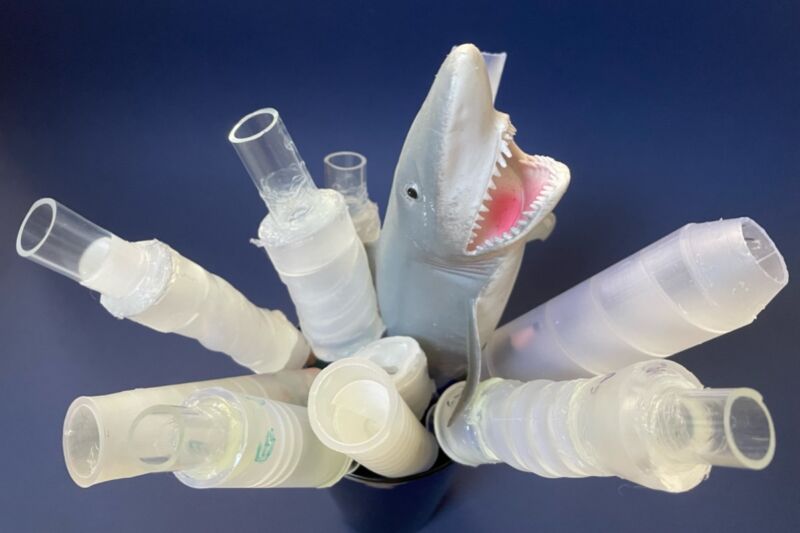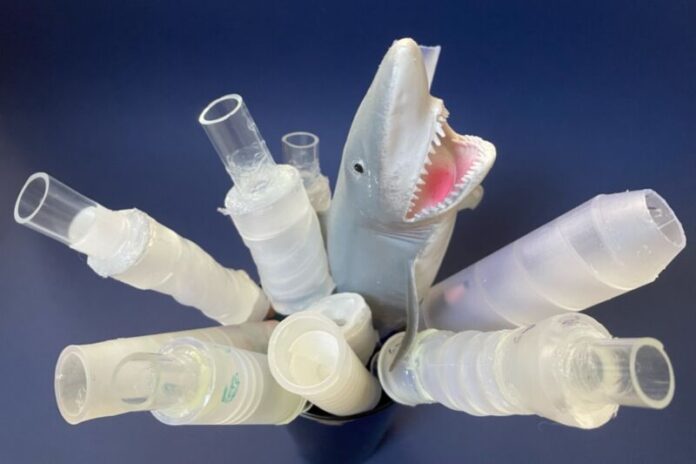
Enlarge / Shark intestines are naturally occurring Tesla valves; scientists have figured out how to mimic their unique structure. (credit: Sarah L. Keller/University of Washington)
Scientists at the University of Washington have re-created the distinctive spiral shapes of shark intestines in 3D-printed pipes in order to study the unique fluid flow inside the spirals. Their prototypes kept fluids flowing in one preferred direction with no need for flaps to control that flow and performed significantly better than so-called "Tesla valves," particularly when made of soft polymers, according to a new paper published in the Proceedings of the National Academy of Sciences.
As we've reported previously, in 1920, Serbian-born inventor Nikola Tesla designed and patented what he called a "valvular conduit": a pipe whose internal design ensures that fluid will flow in one preferred direction, with no need for moving parts, making it ideal for microfluidics applications, among other uses. The key to Tesla's ingenious valve design is a set of interconnected, asymmetric, tear-shaped loops.
In his patent application, Tesla described this series of 11 flow-control segments as being made of "enlargements, recessions, projections, baffles, or buckets which, while offering virtually no resistance to the passage of fluid in one direction, other than surface friction, constitute an almost impassable barrier to its flow in the opposite direction." And because it achieves this with no moving parts, a Tesla valve is much more resistant to the wear and tear of frequent operation.
Read 9 remaining paragraphs | Comments
Ars Technica - All contentContinue reading/original-link]




